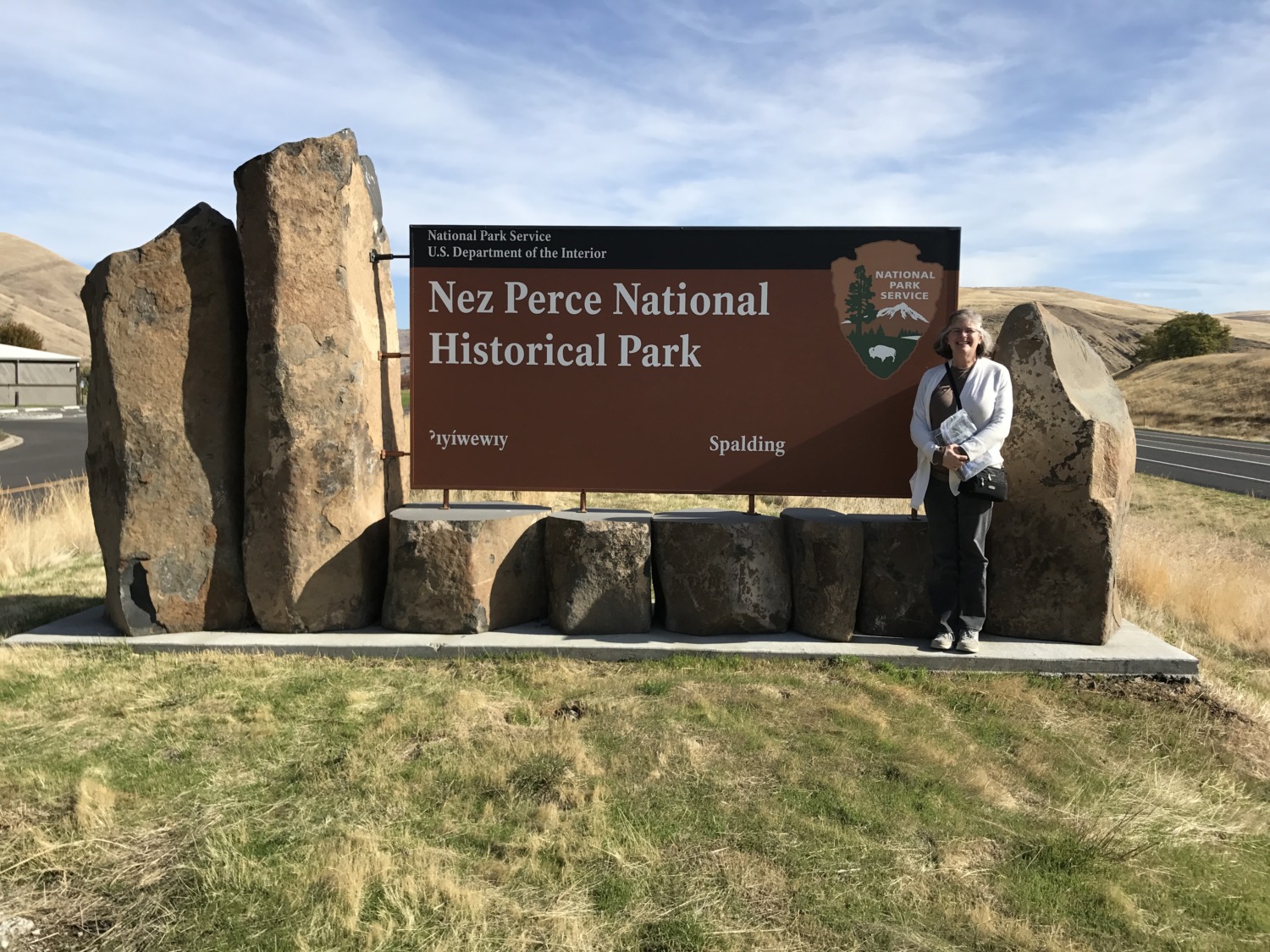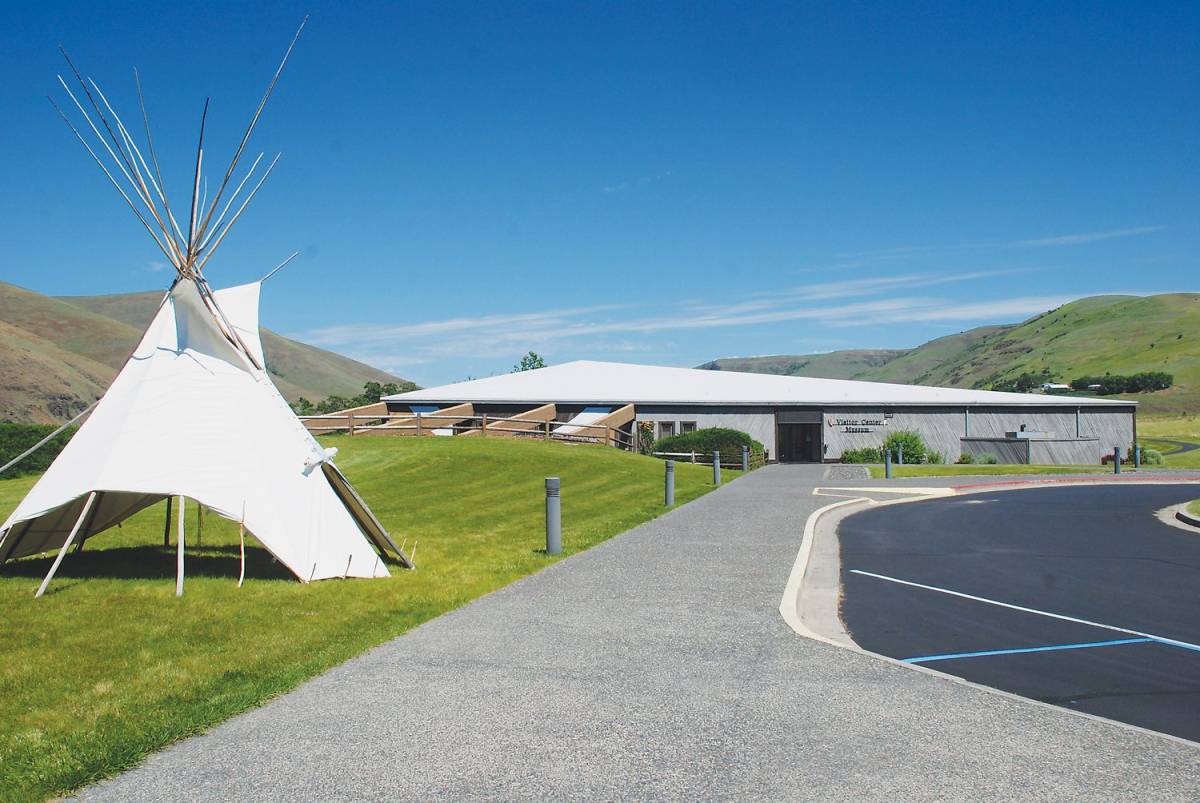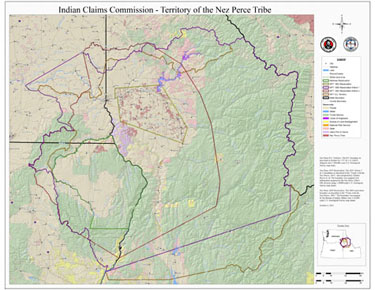
Journey Through Time: A Traveler’s Guide to the Nez Perce National Historical Park
Forget the typical museum visit. The Nez Perce National Historical Park isn’t just a place; it’s an expansive, living classroom, an immersive journey across some of America’s most breathtaking and historically significant landscapes. Spanning parts of Idaho, Oregon, Washington, and Montana, this unique national park unit invites travelers to step directly onto the land where the Nimiipuu (Nez Perce) people have lived for millennia, and where a pivotal, often tragic, chapter of American history unfolded. For anyone seeking a travel experience that combines stunning natural beauty with profound cultural and historical immersion, tracing the Nez Perce historical territory map is an absolute imperative.
Unlike most national parks contained within a single boundary, the NPNHP is a constellation of 38 sites, each a vital piece of a larger narrative. This distributed nature is precisely what makes it so powerful. You’re not just looking at artifacts behind glass; you’re standing on battlefields, walking ancient trails, and gazing across valleys that hold deep spiritual significance. This isn’t merely a trip; it’s an expedition into the heart of the American West, a chance to understand resilience, loss, and the enduring spirit of a people from their own perspective.
Why Embark on This Extraordinary Journey?

The draw of the Nez Perce National Historical Park lies in its multifaceted appeal:
- Unparalleled Historical Depth: This park doesn’t just skim the surface of history. It delves into the rich pre-contact culture of the Nimiipuu, their encounters with Lewis and Clark, the devastating Gold Rush, the broken treaties, and the harrowing 1877 War. It offers a crucial indigenous perspective often overlooked in mainstream narratives.
- Breathtaking Natural Beauty: From the rolling hills of the Camas Prairie to the dramatic canyons of the Snake River, the majestic peaks of the Wallowa Mountains, and the dense forests of the Bitterroot, the landscape itself is a character in the story. Every turn offers postcard-worthy views, inviting hiking, photography, and quiet contemplation.
- Cultural Immersion: The park works closely with the Nez Perce Tribe, ensuring that their story is told authentically. Visitor centers feature Nimiipuu artwork, traditional tools, and often, tribal members sharing their heritage. It’s an opportunity to learn about ongoing cultural traditions and the vibrant contemporary life of the Nez Perce people.
- An Adventure for the Curious Traveler: Because the sites are spread out, visiting the NPNHP is an adventure in itself. It requires planning, a sense of exploration, and a willingness to engage with diverse landscapes and narratives. It’s perfect for those who want more than just a quick photo op, but a truly meaningful travel experience.

Navigating the Tapestry of History: Key Sites and Experiences

While visiting all 38 sites might be ambitious for a single trip, a focused itinerary can provide an incredibly rich experience. Here’s a guide to some of the most impactful locations that truly bring the Nez Perce historical territory map to life:
1. The Spalding Unit (Lapwai, Idaho): The Heart of the Park
Your journey should ideally begin at the Spalding Visitor Center near Lapwai, Idaho. This is the park’s primary administrative and interpretive hub. Here, you’ll find an excellent museum with exhibits detailing Nimiipuu culture, the arrival of Lewis and Clark, and the complex history of the region. Engaging displays, historical photographs, and a well-stocked bookstore provide essential context for the rest of your adventure. The site itself holds significance as the location of Henry Spalding’s Presbyterian mission, a pivotal point in the cultural and religious shifts that impacted the Nez Perce people.
2. The Wallowa Valley (Joseph, Oregon): Ancestral Homelands and Spiritual Core
Perhaps no location more powerfully embodies the heart of the Nez Perce homeland than the Wallowa Valley in northeastern Oregon. This stunning valley, cradled by the snow-capped Wallowa Mountains and anchored by the pristine Wallowa Lake, was the ancestral home of Chief Joseph’s band of Nez Perce. Standing here, gazing across the expansive meadows and reflecting on the sacred burial grounds, one can truly grasp the deep spiritual connection the Nimiipuu had (and continue to have) with this land.
The beauty is overwhelming: alpine lakes, dense forests, and the dramatic peaks often called the "Swiss Alps of Oregon." It’s a place of profound peace, yet also a stark reminder of the tragic removal of the Nez Perce from this cherished valley. Spend time at the grave of Old Chief Joseph, absorbing the quiet reverence of the place. Hiking trails abound, offering opportunities to connect with the landscape on a deeper level. This site is fundamental to understanding why the Nez Perce fought so fiercely – they were defending their very soul.

3. Canoe Camp (Kamiah, Idaho): First Encounters
Moving eastward along the Clearwater River, you’ll reach Canoe Camp. This is where the Nez Perce first encountered the fatigued and starving Lewis and Clark Expedition in 1805. The Nimiipuu, known for their generosity and horsemanship, provided crucial aid, horses, and guidance, enabling the expedition to continue its journey to the Pacific. This site offers a peaceful riverside setting for reflection on this initial, relatively harmonious interaction between Native Americans and Euro-American explorers, a stark contrast to the conflicts that would follow decades later.
4. White Bird Battlefield (White Bird, Idaho): The First Shots of War
Driving south along the Salmon River, the landscape shifts to dramatic, steep canyons. White Bird Battlefield marks the site of the first major engagement of the Nez Perce War of 1877. Standing on this windswept hillside, it’s easy to visualize the events of that fateful morning. The Nez Perce, though outnumbered, used their superior knowledge of the terrain and fighting prowess to decisively defeat the U.S. Army. Interpretive signs guide you through the key movements of the battle, offering a somber and powerful insight into the beginning of a desperate flight for freedom. The quiet solitude of the area amplifies the weight of its history.
5. Big Hole National Battlefield (Wisdom, Montana): A Tragic Chapter
Venturing further east into Montana, Big Hole National Battlefield is one of the most poignant sites. Here, on August 9, 1877, the U.S. Army launched a surprise dawn attack on the sleeping Nez Perce camp, resulting in a horrific massacre of women, children, and elderly, alongside warriors. Despite the immense tragedy, the Nez Perce managed to rally, counter-attack, and eventually escape, though at a terrible cost.
The battlefield is a deeply moving place. You can walk the paths taken by soldiers and Nimiipuu warriors, see the rifle pits, and stand at the memorial. The raw, open landscape, often covered in wildflowers, adds to the solemn beauty. A visit here is essential for understanding the brutality of the conflict and the immense courage and suffering of the Nez Perce people. The visitor center provides an excellent film and exhibits that contextualize the events, often told from the Nez Perce perspective.
6. Other Significant Sites for Deeper Exploration:
- Camas Prairie (Cottonwood, Idaho): A vast, undulating landscape vital to the Nez Perce for its abundant camas root, a staple food. The beauty here is subtle but profound.
- Lolo Trail (Idaho/Montana): An ancient, arduous mountain pass used by the Nez Perce for centuries, and later by Lewis and Clark. Tracing parts of this trail offers a glimpse into the incredible resilience and knowledge of the Nimiipuu.
- Weippe Prairie (Weippe, Idaho): Another significant camas gathering ground and the site where Lewis and Clark first met a large contingent of Nez Perce.
Beyond the Markers: Experiencing the Land
Beyond the specific historical markers, the very act of traversing this vast landscape is an experience in itself. The driving distances between sites can be substantial, but each mile offers a new vista, a fresh perspective.
- Photography: The diversity of landscapes – from river canyons to alpine meadows – provides endless opportunities for stunning photography.
- Hiking: Many sites offer short interpretive trails, while areas like the Wallowa Mountains provide more extensive hiking opportunities. Walking the land connects you physically to the history.
- Wildlife Viewing: Keep an eye out for deer, elk, eagles, and a variety of other wildlife that thrive in these pristine environments.
- Reflection: This journey encourages deep thought. It’s an opportunity to reflect on history, colonialism, cultural survival, and the profound human connection to place.
Practical Considerations for Your Journey
- Transportation is Key: A personal vehicle is absolutely essential. Public transport is not an option for navigating the dispersed sites. Be prepared for significant driving distances, often on scenic but sometimes winding roads.
- Best Time to Visit: Late spring (May-June) or early fall (September-October) offer ideal weather, fewer crowds, and vibrant landscapes. Summer can be hot, especially in the canyons, but still enjoyable. Some mountain passes may be closed in winter.
- Duration: To truly do justice to the NPNHP, allocate at least 3-5 days, focusing on a few key regions. A comprehensive trip could easily take a week or more.
- Accommodation and Food: Plan your overnight stays in towns near the sites you wish to visit. Lewiston, Idaho; Orofino, Idaho; Joseph, Oregon; and Wisdom, Montana, are good bases. Options range from motels to charming B&Bs and campgrounds. Pack snacks and water, as services can be sparse between towns.
- Respectful Tourism: Remember you are visiting sacred and historically significant lands. Stay on marked trails, do not disturb artifacts or natural features, and be mindful of cultural sensitivities. Engage with park rangers and tribal members respectfully.
- Maps and Resources: Pick up detailed maps at the Spalding Visitor Center and download the NPS app for offline access to site information. Cell service can be spotty in remote areas.
Why This Trip Matters: A Deeper Understanding of America
A journey through the Nez Perce National Historical Park is more than just a scenic drive or a history lesson; it’s a profound act of remembrance and reconciliation. It challenges visitors to confront uncomfortable truths about American expansion, to empathize with the struggles of indigenous peoples, and to celebrate their enduring strength and cultural richness.
By tracing the Nez Perce historical territory map, you gain a tangible understanding of the Nimiipuu’s deep connection to their homeland, the immense loss they endured, and their remarkable perseverance. It’s an opportunity to learn history not just from books, but from the very ground beneath your feet, guided by the voices and perspectives of those who lived it.
To travel the Nez Perce National Historical Park is to walk in the footsteps of giants – both the Nimiipuu people who bravely defended their way of life and the landscape itself, which bears witness to centuries of human endeavor and the unyielding spirit of a nation. This is a journey that will stay with you long after you’ve returned home, enriching your understanding of America and fostering a deeper appreciation for its complex and beautiful heritage.


